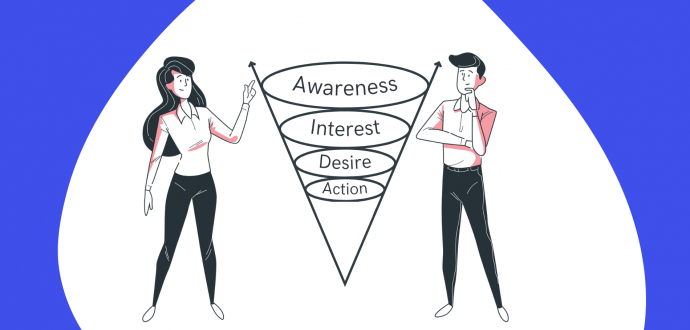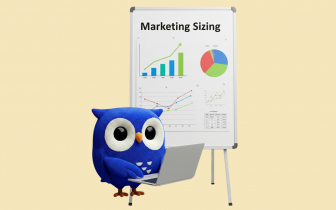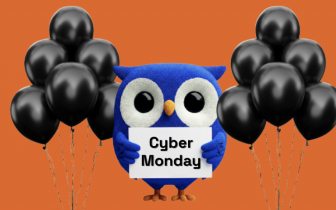What Content to Use for Different Marketing Funnel Stages

Content plays a huge role in your business success. In fact, 82% of marketers actively allocate budgets towards content marketing. Moreover, CMI reports that:
- 76% of marketing professionals share that content marketing generates leads,
- 63% of respondents claim that content marketing helps to nurture the leads,
- 50% of marketers report that content marketing assists in building loyalty with existing customers.
And this data only proves that content is an active part of a marketing funnel.
Today, we are going to figure out what type of content to use at different stages of the marketing funnel. Continue reading to maximize your marketing efforts to attract and retain more clients.
What is a marketing funnel?
Many mix up two notions - marketing funnel and sales funnel. Though they have some similarities (guiding a person from the awareness to the purchase), the definition of the conversion stage will differ.
The sales funnel will simply have a longer conversion process, taking the prospect precisely to the paying client.
Anyway, let’s return to the marketing funnel.
The most common way to define this funnel is using the AIDA formula. Respectively, the marketing funnel will consist of four main levels:
- Awareness,
- Interest,
- Desire,
- Action.
But, to be honest, it’s a short and basic version of the funnel. We can extend it to having more stages following the user interaction with your company:
- Discovery,
- Desire,
- Evaluation,
- Purchase,
- Loyalty,
- Advocacy.
Also, we need to admit that such a linear flow exists only in a perfect world. The truth is that the user can jump to any of the marketing funnel stages. So, it can be a desire or action level straight ahead.
The user can also go through the whole funnel, stuck on the action stage, and, for instance, roll back to the interest stage.
So, it’s vital to know your customers and understand their marketing journey.
Before jumping to content you can create, let’s finalize all marketing funnel-related things. To make everything more understandable and clear, we will generalize the AIDA formula into three widespread and commonly used marketing funnel levels:
- TOFU: top of the funnel,
- MOFU: middle of the funnel,
- BOFU: button of the funnel.
Now, we will discuss what content type and message you can use for each of these stages.
Content for marketing funnel: TOFU
Let’s see what the TOFU is about.
Basically, it’s the stage where people learn about your product or service and the problems it can solve. (It corresponds to the Awareness stage if you are using AIDA.)
You would like to reach and attract as many people as possible at this level. Yet, you shouldn’t forget about the quality of your prospect. (Unrelated users won’t become your buying clients.)
Before creating content, learn about your target audience. You can use tools like Google Analytics, to check whom your competitors are targeting, and so on. After you understand your core customers, you can figure out what tone of voice and message to use to make your content effort successful.
Your main content goal in the TOFU stage is to tell customers about your product or service, what customer needs it covers, or what problem it solves.
Your preferred content types are:
1. Educational blog post
Often, people are not always sure what they are searching for. Your aim is to match the search intent and give full information about the user’s request.
As you know your audience and its interests:
- search for fitting keywords (the cover search intent and help you rank among competitors),
- craft content that addresses user’s needs or problems. Don’t be scared to share helpful, educational, and expert information for free. Remember that your effort, dedication, and pure wish to help will pay off,
- natively share how your company can solve the problem. This way, you’ll pass the user to the next marketing funnel stage,
- don’t forget to build backlinks (for your site and specific blog posts) to ensure they rank high for your desired keywords.
British store Bloom&Wild shares a helpful article about orchid care
2. Landing pages
Your landing page can serve as an informative or educational hub for your potential customers.
- Firstly, this content type can get users acquainted with your company in a friendly and memorable manner.
- Secondly, regardless of what you sell, you can build a clear and helpful page with content that will answer your TA requests.
- Thirdly, landings are the perfect way to guide users to the next funnel stage. Yet, you need to understand that they will look a little bit more salesy than blog articles.
British store Dreams created a cool educational landing page about how to choose a perfect pillow
3. Social media posts
Hubspot shares that 22% of users prefer to discover new products via social media. So, why shouldn’t it be your brand that customers will discover?
Once again, keep in mind your buyer persona or ideal customer profile, create an educative or informational post, and ensure it gives value to customers.
Also, it’ll be a good idea to share your company’s USP (unique selling points) in some of your posts.
This way, running social media for your business is an awesome way to grow your company’s awareness.
New Zealand outdoor store educates users on how to choose a waterproof jacket
Content for marketing funnel: MOFU
The middle of the funnel is where users are able to define the problem and start looking for solutions. That means customers will engage with your company in a more meaningful way.
At this stage, you will have fewer potential customers left. Yet, they are more interested in getting their problems solved. So, it’s time for you to become their magic wand that will fade all the issues away.
Though you can still rely on educational and informative content here, it should transform into more precise pieces. Make deeper guides, provide more insights, and engage with your potential buyers more actively.
Anyway, what content types are applicable at the MOFU stage?
1. Different variations of blog posts
As we’ve written just a couple of seconds ago - dive deeper into helping customers with your content.
Your go-for types are how-to guides, success stories, case studies, product overviews, and so on. These formats will ensure you fully explore the topic.
This way, you can tell users more about the products you offer and how they can help them, write about some products’ peculiarities, talk about your product’s benefits compared to competitors, and so on.
- As people prefer to read stories, many content marketers name success stories as one of the most efficient content types for the MOFU stage.
- Also, let people compare. Share comparison articles and include your brand among others. Make sure to emphasize its USP and the benefits users can get.
Kaspersky shares a whole bunch of customer success stories
2. Landing pages
Pages on the MOFU stage will somewhat differ from the ones from the TOFU. Nevertheless, landing pages will still serve as one of the best content types and the one that is able to convert users.
Give more details about your service or good. It’s time to be more specific and address particular user needs.
Make sure to add a visible CTA (call to action) on your landing page. It might be in the form of the linked text or button that leads to the product itself.
Or you can add a product with an option to buy it right from the landing page.
Adsy shares benefits for a specific audience - buyers (people who want to buy guest posts)
3. Email newsletters
According to Semrush, email marketing hits 54% of efficiency when it comes to lead generation. This way, even if your potential client is only interested in your services or goods (but is not ready to buy them), it’s time to encourage them to subscribe to your newsletter.
Ensure you segment your subscribers correctly. Make a separate group that, for instance, visited your product’s landing page but hasn’t made any purchases.
Create an email sequence that will tell them more about your product and how it can solve their pains.
Runway introduces a new feature and encourages subscribers to try it straight ahead
4. Create surveys
Yes, you are working with people who are only familiarizing themselves with your product. Yet, as they’ve passed the awareness (TOFU) stage, you can receive some valuable information and feedback from them.
You can ask them how clear the product or service descriptions are, what features users find helpful, what things you are missing, what stuff you can improve, and so on.
This way, you get some essential data from real people and understand what they pay attention to while choosing a brand or a product.
You can spread your surveys via email newsletters or specific landing pages. Social media channels with work, too.
Semrush has made a survey to learn more about users’ approaches to doing content marketing to create better guides in the future
Content for marketing funnel: BOFU
The bottom of the funnel is where a user has made a decision. Here, we can talk about conversion, subscription, or purchase in terms of marketing funnel.
It’s time to show users why they need to choose your company over others!
As we’ve mentioned at the very beginning, users’ journey is not always linear.
- This means you can guide them from: reading general information about the product - checking more details about the product’s features and benefits - learning why exactly your company is the best one to buy this product from - making a purchase.
- Or, this can also mean that the potential customer discovers your landing page that is dedicated exactly to the product’s purchase.
That leads us to one conclusion, you need to choose the correct keyword that will match the user’s intent to purchase. For example, your landing page can include long-tail keywords like “buy your product name,” “where to buy your product name,” “your product store near me,” “buy your product name online,” and so on.
You can use SEO or paid strategies. Yet, we want to remind you that though SEO results take longer to achieve, they will serve you much longer and bring constant results. Some of the key SEO elements to keep in mind to rank high on SERP are building backlinks and creating E-E-A-T content.
So, what content types are better to use for the BOFU stage?
1. Landing pages
Landing pages, perhaps, is the best way to lead users to the purchase. Once again, do your best to create the page and content that will hit the mark.
Logically lead a customer to the purchase decision. Give the full information about the product, describe your good’s or service’s benefits, provide price comparison (if you wish), and add testimonials from your happy clients.
You can also describe what guarantees you offer and what support (before and after the purchase) you offer.
Let’s not forget about clear and proactive CTA on the button that leads to the shopping cart.
All-in-all, your landing page and the content on it should be:
- Structured,
- Clear,
- Descriptive,
- Helpful,
- Proactive.
British plant store Patch has created a fantastic landing where users not only can buy preferred plants but read a whole story about them to make an informed decision
2. Email newsletters
Our team often talks about the perks of an extensive and thought-out email marketing strategy. One of the great perks of email newsletters is their ability to generate and grow sales (which is just what we need at the BOFU stage).
You can segment your audience by those customers who have abandoned shopping carts. Sometimes, something can distract them from making a purchase. Or a customer can still have some doubts.
Create content for your letter that will gently lead a person to finalizing a product. Include benefits the product offers or problems it solves. Add similar products, sometimes, customers are unsure what exactly they are looking for.
Thus, if you have too high a percentage of abandoned shopping carts, re-read and re-think the content on the respective pages. It’s highly likely that something bothers users while they going through the checkout.
You can also write an email asking customers to rate their experience and share what complications during the checkout they have.
Google sets a worthy example of the abandoned cart example. It shows that items like this go fast, suggest any help to the user if needed, and add a clear CTA.
3. Social media posts
A whopping 76% of users have bought a product they saw in a company’s social media post.
So, we advise you to dedicate a certain amount of posts aimed at selling your products. Nevertheless, remember that we do not suggest turning your whole feed into a shop that sells. Remember to keep everything balanced.
As you create a post about your product, make sure that it’s clear and descriptive. State the good’s or service’s features and problems it solves or benefits it offers. Include the price.
You can add your buying customers’ success stories and show how this item has improved their lives.
Don’t forget to include high-quality shots and/or videos of your product or service.
Elf Cosmetics presents a skincare kit clearly describing each item in it and stating prices straight ahead. Plus, it’s possible to buy the kit directly if using the Instagram app by pressing “View shop.”
Conclusion
Guiding customers through the marketing funnel can be a bumpy road. Yet, utilizing the right content can make customers’ journey smoother.
Keep a few essential things in mind:
- Know your audience,
- Gather keywords you’d like to rank for at different marketing funnel stages,
- Remember about three major stages - TOFU, MOFU, and BOFU, and create content to match users’ needs for each of them,
- Don’t forget to gather users’ feedback to constantly improve your products and content quality.
If you stick to these tips and create informative, helpful, and engaging content, you will palpably increase conversions and sales for your company.







